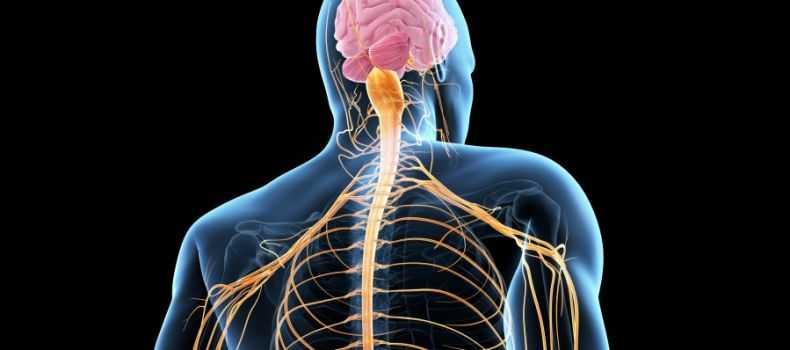Learn more about health with this collection
How to stay motivated
How to create a workout routine
Proper form and technique for home workouts
The nervous system
- It is a complex collection of nerves and specialized cells known as neurons that transmit signals between different parts of the body. It is essentially the body's electrical wiring.
- Structurally, the nervous system has two components: the central nervous system (the brain, spinal cord, and nerves) and the peripheral nervous system (sensory neurons, ganglia and nerves that connect to one another and to the central nervous system).
- Functionally, the nervous system has two main subdivisions: the somatic, or voluntary, component (nerves that connect to one another and to the central nervous system and the autonomic nervous system (regulates certain body processes, such as blood pressure and the rate of breathing, that work without conscious effort).
63
499 reads
Nerves, neurons and synapses
- Nerves are cylindrical bundles of fibers that start at the brain and central cord and branch out to every other part of the body.
- Neurons send signals to other cells through thin fibers called axons, which cause chemicals known as neurotransmitters to be released at junctions called synapses.
- A synapse gives a command to the cell and the entire communication process typically takes only a fraction of a millisecond. Signals travel along an alpha motor neuron in the spinal cord 268 mph (431 km/h); the fastest transmission in the human body, according to Discover magazine.
61
377 reads
Diseases of the nervous system
Patients with nerve disorders experience functional difficulties, which result in conditions such as:
- Epilepsy, in which abnormal electrical discharges from brain cells cause seizures
- Parkinson's disease, which is a progressive nerve disease that affects movement
- Multiple sclerosis (MS), in which the protective lining of the nerves is attacked by the body's immune system
- Amyotrophic lateral sclerosis (ALS), also known as Lou Gehrig's disease, is a motor neuron disease which weakens the muscles and progressively hampers physical function
- Huntington's disease, which is an inherited condition that cause the nerve cells in the brain to degenerate
- Alzheimer's disease, which covers a wide range of disorders that impacts mental functions, particularly memory.
66
318 reads
Pain and the nervous system
Of all the diseases of the nervous system, the most common difficulty that people have is pain, and much of that is nerve-related.
58
355 reads
The nervous system and vascular disorders
- Stroke, which occurs when there is bleeding on the brain or the blow flow to the brain is obstructed;
- Transient ischemic attack (TIA), which are mini-type strokes that last a shorter period of time but mimic stroke symptoms; and
- Subarachnoid hemorrhage, which is specifically bleeding in the space between your brain and the surrounding membrane that can be the result of a trauma or rupturing of a weak blood vessel;
Infections such as meningitis, encephalitis, polio, and epidural abscess can also affect the nervous system, the NIH noted.
61
320 reads
CURATED BY
More like this
4 ideas
What You Should Know About the Peripheral Nervous System
verywellmind.com
4 ideas
Brain Anatomy and How the Brain Works
hopkinsmedicine.org
1 idea
Neuroscience for Kids - Invertebrate Nervous System
faculty.washington.edu
Read & Learn
20x Faster
without
deepstash
with
deepstash
with
deepstash
Access to 200,000+ ideas
—
Access to the mobile app
—
Unlimited idea saving & library
—
—
Unlimited history
—
—
Unlimited listening to ideas
—
—
Downloading & offline access
—
—
Personalized recommendations
—
—
Supercharge your mind with one idea per day
Enter your email and spend 1 minute every day to learn something new.
I agree to receive email updates

